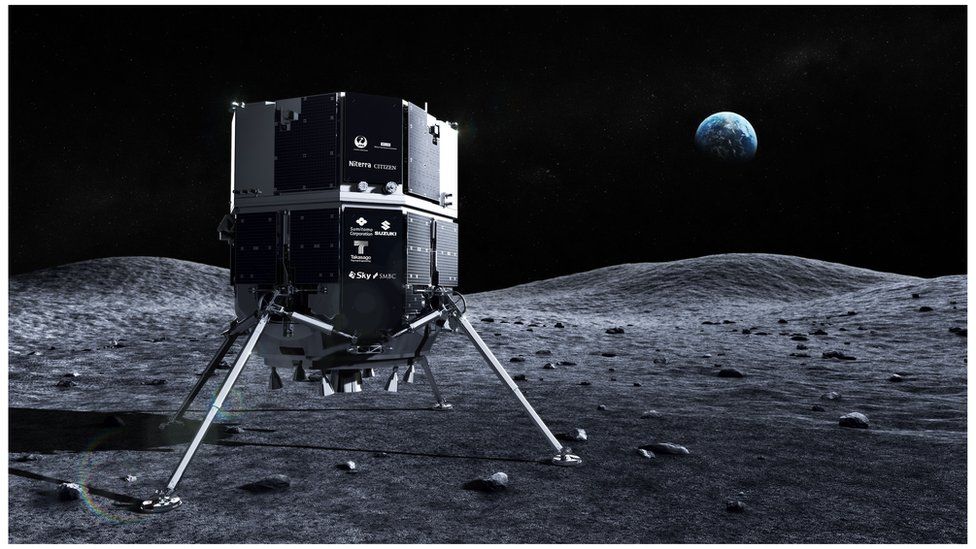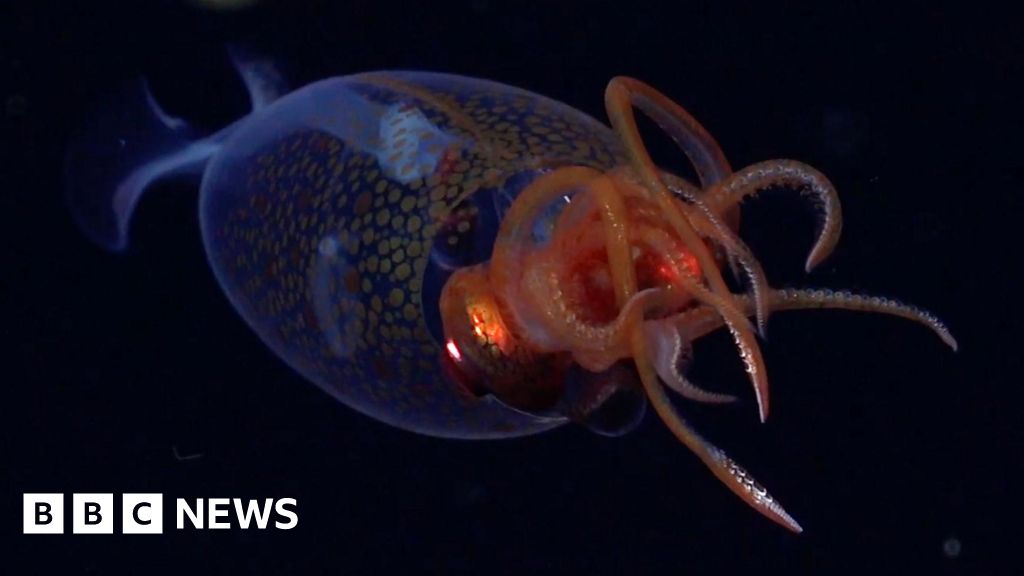ARTICLE AD BOX
 Image source, iSpace
Image source, iSpace
Artists impression of the Hakuto-R spacecraft. on the lunar surface
By Pallab Ghosh
Science correspondent
A Japanese company hopes to land an uncrewed probe on the Moon on Tuesday.
If it succeeds, the Hakuto-R M1 mission would be the first time a private firm has landed on the lunar surface.
Once there, the lander will deploy a two-wheeled, tennis-ball-sized robot developed by a Japanese toymaker and a rover from the United Arab Emirates.
Only the United States, Russia and China have successfully landed a spacecraft on the Moon.
The spacecraft is scheduled to land at 1740 BST (1640 GMT).
Takeshi Hakamada the CEO of the company, iSpace, told BBC News that he hoped the mission would be the start of a series of commercial missions.
"I believe this represents a big change," he said. "This is going to open more opportunities for other private companies and even small countries to do lunar exploration in the future."
Image source, iSpace
Image caption,The spacecraft's journey to the Moon took five months
The spacecraft was launched by a Falcon 9 rocket from Elon Musk's SpaceX company last December from Cape Canaveral, Florida, which was the space centre from which the Apollo Moon landings blasted off in the 1960s and 70s.
Those missions took only a few days to reach lunar orbit, but it took Hakuto-R five months. This was because it had a much less powerful propulsion system, in order to save fuel and reduce costs.
The lander is just over 2m tall and weighs 340kg, relatively small and compact by lunar spacecraft standards. It will begin an hour-long landing manoeuvre from its orbit, around 100km above the surface, where it is moving at nearly 6,000km/hour.
After reaching the landing site in the Moon's northern hemisphere, Hakuto-R will deploy two payloads.
One is the UAE's Rashid Rover, which will analyse the lunar soil, its geology and atmosphere. The other is the Sora-Q mini-rover, a ball shaped robot which will roll across the surface. It was made by the toy company TOMY, which created the Transformers. It measures 8cm in diameter and weighs about 250 grams.
The spacecraft is also carrying an experimental solid-state battery and other instruments to test how they perform on the Moon.
Image source, iSpace
Image caption,The lander is small and light compared with other spacecraft that have been sent to the Moon
But the primary aim of the mission is to assess the viability of commercial launches to the lunar surface. It is the first test by iSpace of what they hope will be a series of commercial landers over the next few years, each more ambitious than the previous.
The company's vision is to provide commercial services for a sustained human presence on the lunar surface, such as sending up equipment for mining and producing rocket fuel.
According to Dr Adam Baker, who is director of a space consultancy firm not involved with the project, Rocket Engineering, a successful landing would represent a "step change" in commercial involvement in space exploration.
"If it is affordable and can be repeated, it opens up the door for anyone who is prepared to pay the price to land something on the surface of the Moon," he said.
But Dr Bleddyn Bowen, a space expert at Leicester University is more cautious about the commercial potential of lunar exploration, citing the recent collapse of the UK rocket launch company Virgin Orbit as an example of the difficulties of making money from space.
"Even if this first test succeeds, whether the business model would work is another matter," he said. "Often the economic challenges are greater than the technological ones."
"Getting to the Moon is extremely expensive, so anything a private company would want to make a profit on would have to be extremely lucrative to justify the necessary costs."

 1 year ago
55
1 year ago
55








 English (US) ·
English (US) ·